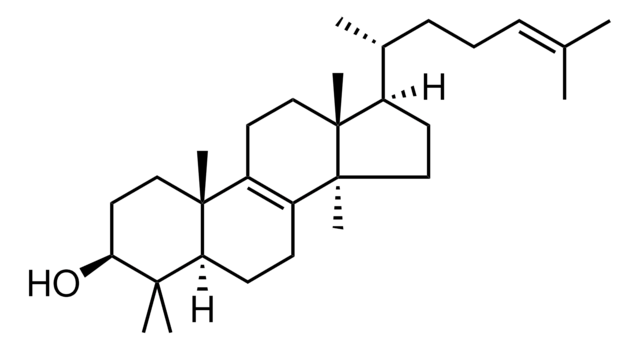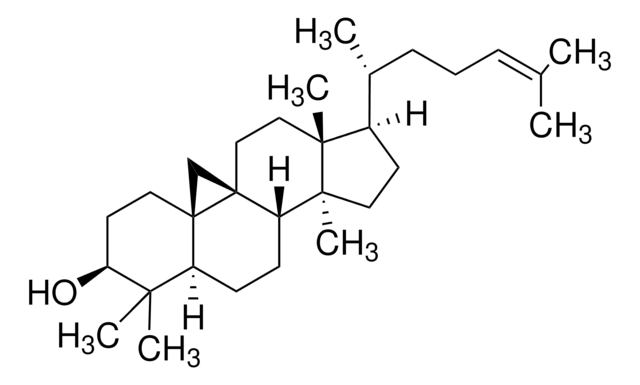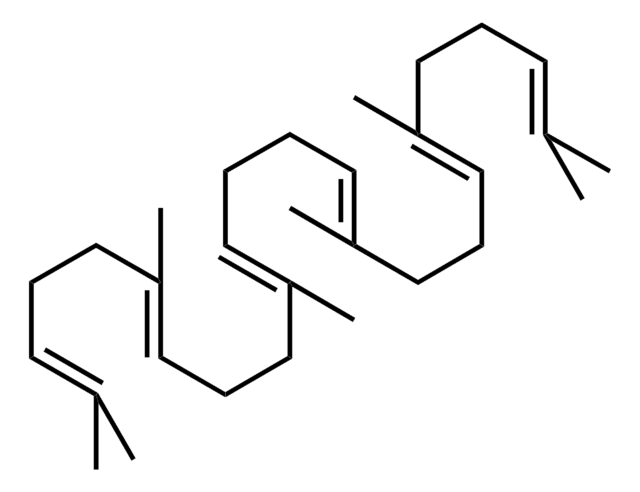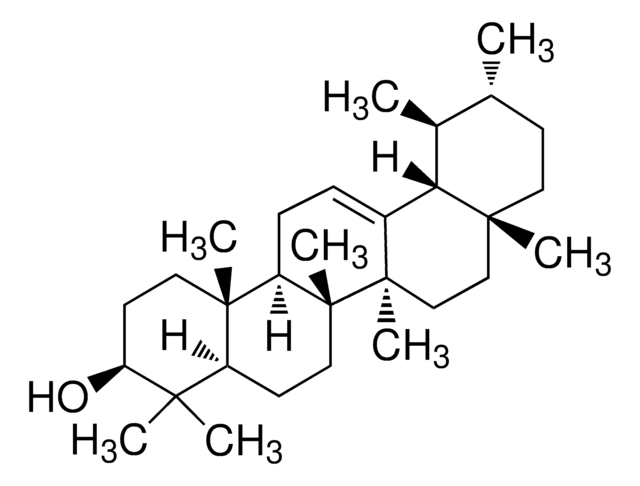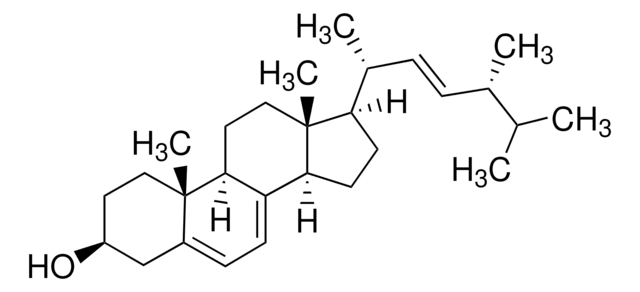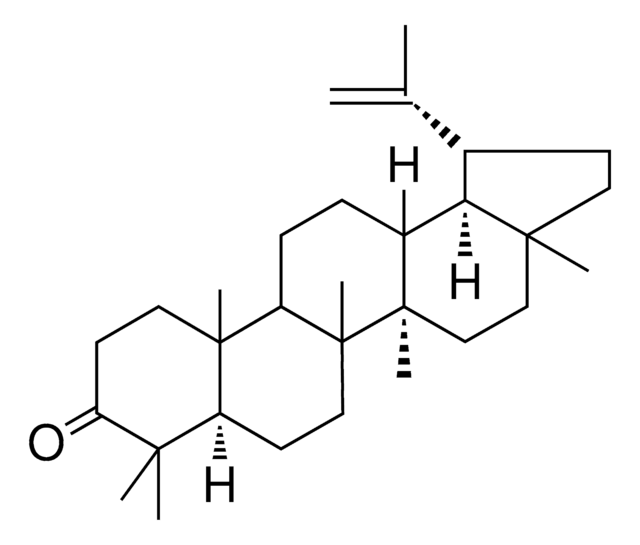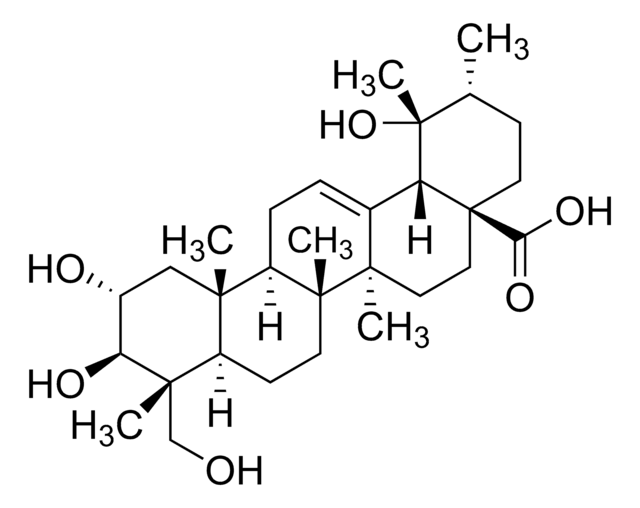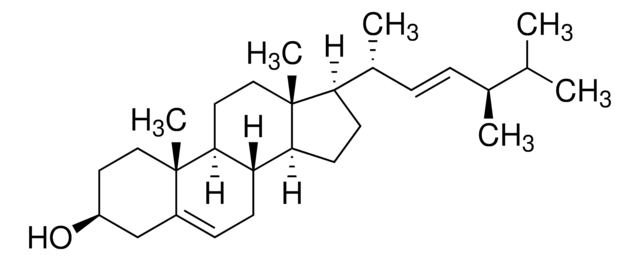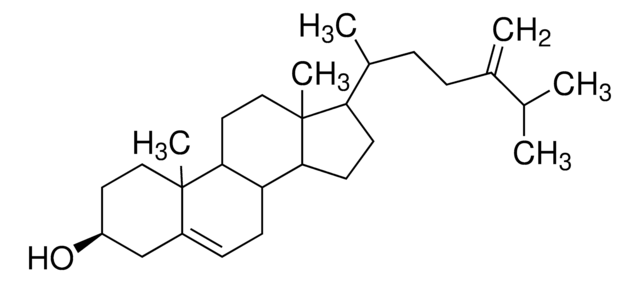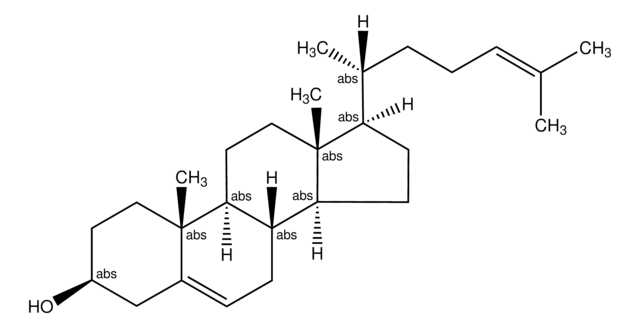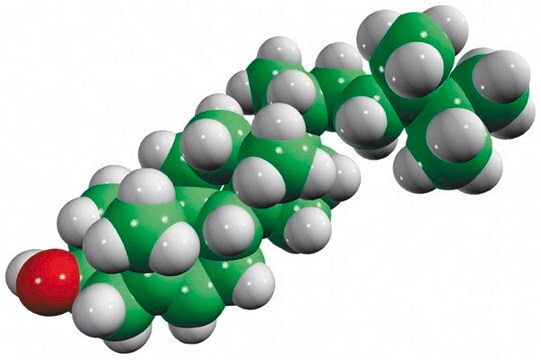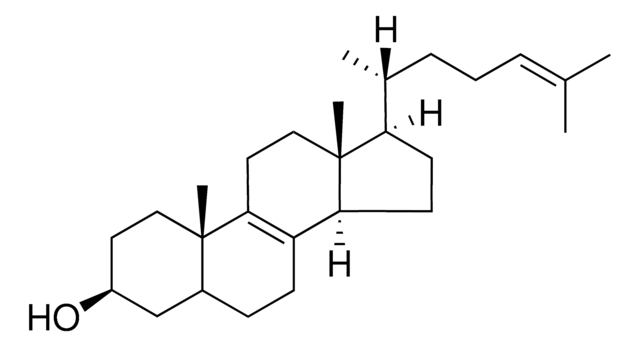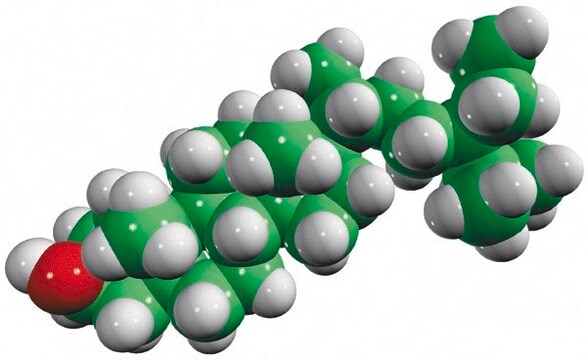08172
Cycloartenol
≥90% (GC)
Sinonimo/i:
(3S,5R,8S,9S,10R,13R,14S,17R)-17-((R)-1,5-Dimethyl-hex-4-enyl)-4,4,13,14-tetramethyl-tetradecahydro-cyclopropa[9,10]cyclopenta[a]phenanthren-3-ol, 9,19-Cyclo-24-lanosten-3β-ol, Handianol
About This Item
Prodotti consigliati
Saggio
≥90% (GC)
Stato
powder
Stringa SMILE
O[C@@H]1C([C@H]2[C@@]3([C@]4([C@H]([C@]5([C@@]([C@H](CC5)[C@@H](CCC=C(C)C)C)(CC4)C)C)CC2)C3)CC1)(C)C
InChI
1S/C30H50O/c1-20(2)9-8-10-21(3)22-13-15-28(7)24-12-11-23-26(4,5)25(31)14-16-29(23)19-30(24,29)18-17-27(22,28)6/h9,21-25,31H,8,10-19H2,1-7H3/t21-,22-,23+,24+,25+,27-,28+,29-,30+/m1/s1
ONQRKEUAIJMULO-YBXTVTTCSA-N
Cerchi prodotti simili? Visita Guida al confronto tra prodotti
Categorie correlate
Applicazioni
- Genome-Wide Investigation of Oxidosqualene Cyclase Genes Deciphers the Genetic Basis of Triterpene Biosynthesis in Tea Plants - Research on cycloartenol′s synthesis pathways through the genetic study of oxidosqualene cyclase in tea plants, providing insights into the enhancement of plant sterols beneficial for human health (Du et al., 2024).
Confezionamento
Codice della classe di stoccaggio
11 - Combustible Solids
Classe di pericolosità dell'acqua (WGK)
WGK 3
Punto d’infiammabilità (°F)
Not applicable
Punto d’infiammabilità (°C)
Not applicable
Dispositivi di protezione individuale
Eyeshields, Gloves, type N95 (US)
Scegli una delle versioni più recenti:
Possiedi già questo prodotto?
I documenti relativi ai prodotti acquistati recentemente sono disponibili nell’Archivio dei documenti.
I clienti hanno visto anche
Il team dei nostri ricercatori vanta grande esperienza in tutte le aree della ricerca quali Life Science, scienza dei materiali, sintesi chimica, cromatografia, discipline analitiche, ecc..
Contatta l'Assistenza Tecnica.